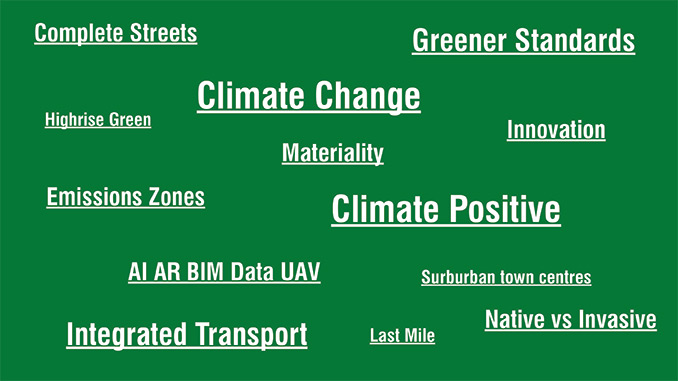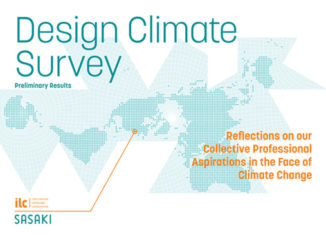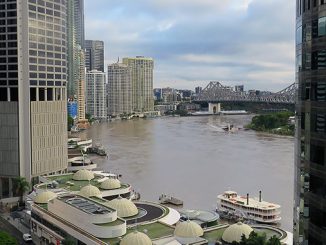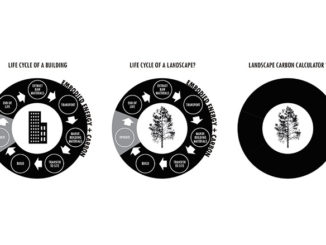
Every year I look to predict the future trends for the coming year and for 2020 I will be looking at the coming decade. As there are many areas of the industry and possible topics this article will briefly cover the main trends. I also recently published my recent review of my 2019 predictions for reference.
Climate Change – Climate Positive
An urgent issue that is becoming more pressing as each year passes and we head towards 2030 which is seen by many as the tipping point of no return for mitigating the impacts of climate change.
As landscape architects, we will be asked by public (various levels of government) and private (insurance, property, finance) organisations to advise and collaborate with allied professionals to create large scale solutions and strategies to mitigate the impacts of climate change in all landscape typologies (coastal, mountains, grasslands, etc). Landscape architects will be one of the few professions that will be able to provide solutions that sequester carbon through climate positive designs and we will utilise tools such as the Pathfinder to provide data and justification for our designs.
Improved Standards and Increased Requirements = Greener Cities
Climate change will be the catalyst to improve the quality of design and utilise and evolve the current standards and create standards that are broad in scope and look to develop large scale strategies. These standards will shift the focus from carbon-neutral high-performance architecture to address larger scale (city and regional) issues with greater emphasis on blue and green infrastructure and better quality of landscape and spaces, to adapt cities to be greener, healthier and provide increased quality of living.
Developing green spaces in high rises
With growing populations and the increase in homes, schools, offices being housed in high rise buildings it will be up to landscape architects to design spaces within buildings that provide active and passive spaces for residents, workers and students. In the 2010s we saw a rise in green walls, green roofs, and conservatories and these will continue throughout the 2020s.
Suburban town centres
Density will not only increase in city cores but there will also be a shift to the suburbs as people wish to have access to the urban lifestyle precincts within walking distance of suburban homes that allow for work, shopping, dining in one area (a rethink of town centres) that are located in their neighbourhood. This has occurred in various countries over the past 15-20 years already but will increase as a trend as people wish to have an urban lifestyle but within close proximity.
Continued shift from roads to rail and last mile/kilometre infrastructure
In the past few years, we seen changes in the way we move around our cities including rideshare, bike share and scooters and this has resulted in more government expenditure moving away from roads and going towards differing modes of transport (heavy/light rail, shared paths, bike highways etc). This shift and expenditure will increase as cities seek to deal with increasing congestion and create “last mile” infrastructure.
New congestion and emissions zones
Cities will need to redefine congestion (and emissions) zones due to larger traffic volumes due to increased ridesharing vehicles and on-demand deliveries which create the need to change some parking areas to drop-off and loading zones. Autonomous vehicles will grow in numbers but these will be a small percentage of the vehicle fleet (in the 2020s) and mostly utilised by logistics companies.
Integrated Transport Hubs
We will see integrated transport solutions that create varying sized hubs (regional, city, suburb, precinct) so that people can get around cities with less effort and a smaller carbon footprint.
Complete Streets
Landscape architects will need to take a larger role in designing complete streets that are activated, tree-lined, pedestrian-friendly and accommodate the various modes and models of travel. There will also be an increase in shared and fully pedestrianised streets and squares that are designed as a high-quality network of spaces for people and live, work and play in cities.
Native vs Invasive
Ecologists, Botanists, Landscape architects and many other professions have been having conversations and debates relating to changes in climatic zones (due to climate change) and the impact on flora and fauna. These discussions revolve around what is native, invasive, indigenous, endemic mean in a changing climate? and in the 2020s the main question will be what is the impact on the landscape flora and fauna start to migrate and adapt due to changes in climate and the number of disasters (floods, fires, drought)? Are climatic zones and classifications antiquated or do we need to adjust our methodology and approach to adjust for our impact on the world or do we seek to conserve endemic ecosystems in a suspended state?
Technology innovation
The decade of the 2020s will see technological innovation in numerous areas through research and development but also due to the sheer need to find solutions to critical problems. With rising climate change issues, increasing density and consumption and fewer resources, we as landscape architects will need to look to innovate to find design solutions that provide the best solutions with the resources available.
BIM for Construction | AR for Representation
We have seen the rise of Building Information Management software and Virtual Reality within the design industry over the past five years and it will continue to grow as clients and contractors see the benefits and cost savings during construction (procurement, fabrication, etc). We will also see greater use of Augmented Reality as clients wish to have a visual experience on-site rather than in an immersive experience in an office or virtual space.
Data Analysis, Machine Learning and AI
Data Collection and Analysis will have an impact on design and maintenance. Landscape architects should seek to use data analysis, machine learning and artificial intelligence to greater understand how people are moving, working, living and playing in cities and to improve the design process and maintenance. However, we will need to navigate the pros and cons of using data as a design tool and still work with the community to develop considered contextual designs.
Landscape management practices will change as monitoring and data collection become cheaper and more accessible allowing cities to cater for events, visitor numbers, length of stay, preferred routes and desire lines and place facilities in key locations based on data analysis.
Post Evaluation and Urban Forestry via Drone
The use of drones and UAVs (water, land and air based) to undertaking inventory (urban forests, waterways, etc), site inspections, and post-evaluation with LIDAR, point cloud, Machine Learning and other applications that will provide us with tools to evaluate and monitor the performance of designs.
Graphic Representation
The conceptual tools we use will evolve over time in the past decade we have seen the increase in computer-assisted hand sketching using apps on iPads and tablets. As AI/Machine learning (such as GauGAN) matures and becomes more intuitive and easy to use we will see landscape architects utilising the software in their design process to provide quick realistic perspectives.
Materiality and Construction techniques
We will continue to use natural materials but there will be an emphasis on the origin, extract, production and transport of materials to encourage more sustainable projects. Materiality (raw, composites and waste byproduct) and construction techniques will change as designers and clients seek to save on materials and reduce the carbon footprint of their projects. Landscape architects will look to other industries (manufacturing, logistics, etc) to seek out methods and processes for fabricating (3D printing, extrusion) to reduce waste and reuse waste materials.
Greater diversity of skills and greater inclusion
Landscape architecture firms will look quite different in 2030. Due to the increase in the number of projects (due to growing cities) and the involvement of landscape architects in larger-scale initiatives, we will see firms seek out people who are not trained as landscape architects to fulfil roles in project management, conceptual and construction documentation to enable landscape architects to focus on strategy and design.
Also due to the change in technology, we will see firms employ a greater diversity of professions and skills as they seek to utilise new tools such as data collection and analysis, modelling, prototyping, programming, machine learning and other new technologies.
We will also see the profession will an increase in diversity and be more inclusive as the profession strives to be more representative of the wider population.
Change in Practice
Landscape architecture practice has used the same model selling services based of lump-sum fees and hourly rates for decades and it is a model that needs to be reevaluated in each country to determine if there is a better model for landscape architects to earn income for their services. The cost of business is also rising as clients and organisations expect designers to take on more risk and more costs whilst not raising fees. Throughout the 2020s landscape architects will need to become more business savvy and learn to promote the “added value” that we bring to projects to ensure that they can continue to practice as a profitable business and not as a vocation.
Recognition
There has been some progress in recent years, however, landscape architects will continue to have to push for recognition of the landscape architecture profession by the media and professional organisations to ensure that our profession and work is recognised and not co-oped or combined with architecture or engineering professions.
Conclusion
With the heightened discussion around climate change and continue coverage of devasting climatic events (fires, floods) we could be drawn into a hyper state of concern and depression about the future, however, we need to be strong and see the challenges ahead as a way to move the profession and the world moving through the coming decade. I am optimistic about the future and hope that we can all join together in creating extraordinary landscapes and places in the 2020s.

Article Written by Damian Holmes is the Founder and Editor of WLA.



